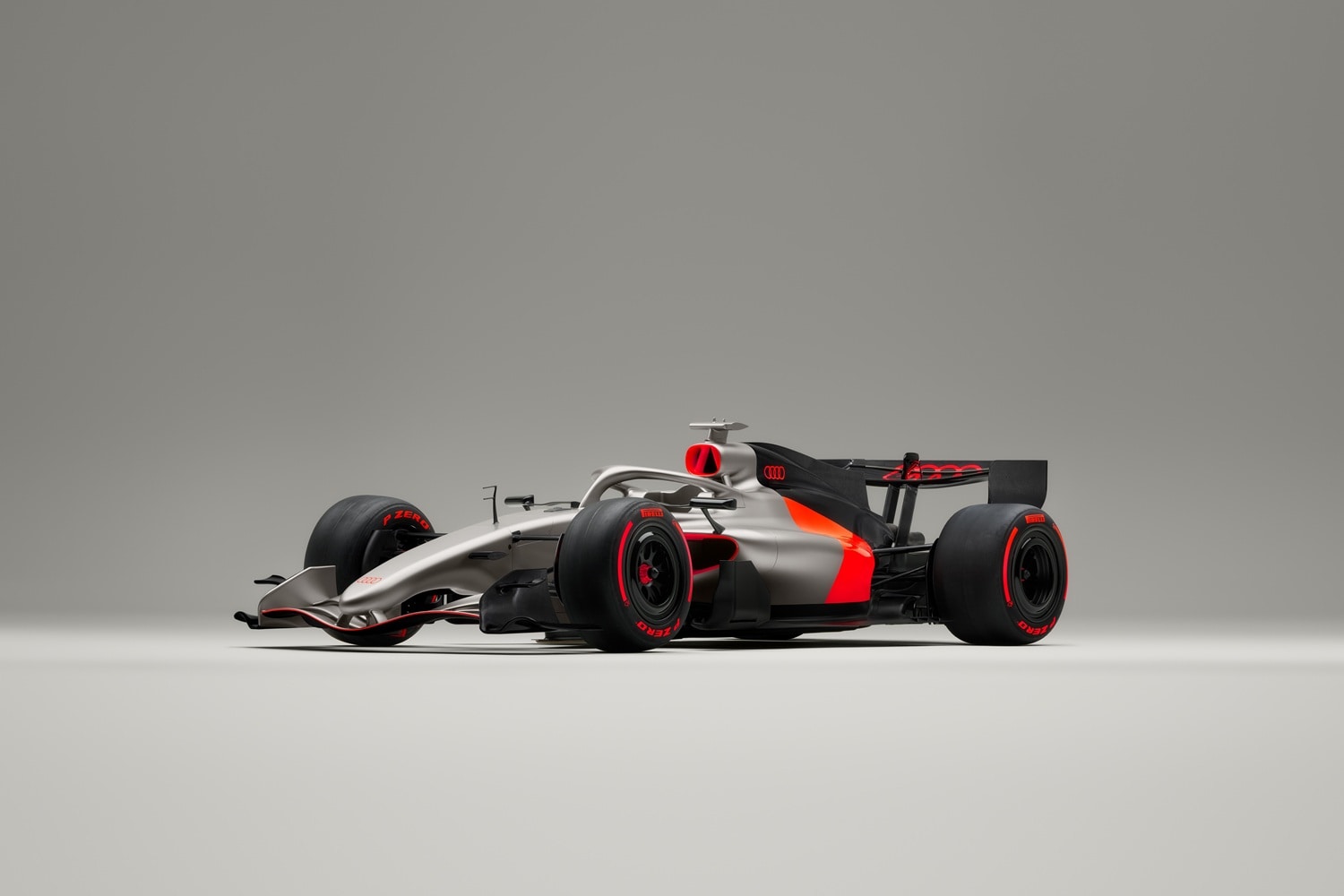What is the story about?
Audi, on Thursday, unveiled its Formula 1 design concept, marking a major step toward its debut in the sport. With 115 days remaining before its first race, the company presented the Audi R26 Concept at its Brand Experience Centre in Munich, previewing its future car and its new corporate identity.
“Audi is making a clear, ambitious statement,” said CEO Gernot Döllner. “Formula 1 will be a catalyst for the change towards a leaner, faster and more innovative Audi. We are not entering Formula 1 just to be there. We want to win. By 2030, we want to fight for the World Championship title.”
The R26 Concept previews the colour scheme and design of Audi’s first Formula 1 race car, to be unveiled in January 2026. It embodies Audi’s new design philosophy—clear, technical, intelligent, and emotional.

Chief Creative Officer Massimo Frascella said the Formula 1 project will pioneer the company’s new unified design language. The car features minimalist surfaces and geometric lines in titanium, carbon black, and Audi red. For the first time, Audi’s rings will appear in red to mark its Formula 1 entry.
Audi sees Formula 1 as a strategic platform to demonstrate its “Vorsprung durch Technik” philosophy. The series reaches over 820 million fans worldwide and drew 1.6 billion TV viewers in 2024. With a cost cap limiting team budgets, Audi views the sport as both technologically and financially sustainable.

The team already has three major partners—adidas, bp, and future title sponsor Revolut—and has brought Qatar’s sovereign wealth fund on board as an investor after acquiring the Sauber Group in Switzerland earlier this year.
The Formula 1 team will be led by Mattia Binotto, former Ferrari Team Principal, and Jonathan Wheatley, both reporting to Döllner. The driver lineup combines experience and youth with Nico Hülkenberg from Germany and Gabriel Bortoleto from Brazil.
CFO Jürgen Rittersberger said Formula 1 offers the right mix of “entertainment, emotion, and technology,” helping Audi reach younger customers while providing a financially sustainable business model.

Motorsport has long been part of Audi’s identity, from rallying and Le Mans to Formula E and the Dakar Rally. Formula 1 is expected to serve as a testing ground for innovation, particularly in electric systems and sustainable fuels—areas crucial to future road cars. The company will enter at a favourable moment, as the 2026 regulations introduce new hybrid powertrains and chassis designs.
Since 2022, Audi has been developing its Formula 1 power unit in Neuburg an der Donau, Germany. The hybrid system includes a 1.6-litre V6 turbo engine, an electric motor, and an energy recovery system. Partner bp is developing sustainable fuels for use from 2026. The first complete power units will be shipped in December 2025.

Race car production takes place in Hinwil, Switzerland, while a new technology office in Bicester, UK, provides additional Formula 1 expertise. Audi’s full Formula 1 team will be introduced in January 2026, followed by testing in Barcelona and Bahrain, ahead of its debut race in Melbourne, Australia, from March 6–8, 2026.
“Audi is making a clear, ambitious statement,” said CEO Gernot Döllner. “Formula 1 will be a catalyst for the change towards a leaner, faster and more innovative Audi. We are not entering Formula 1 just to be there. We want to win. By 2030, we want to fight for the World Championship title.”
The R26 Concept previews the colour scheme and design of Audi’s first Formula 1 race car, to be unveiled in January 2026. It embodies Audi’s new design philosophy—clear, technical, intelligent, and emotional.

Audi R26 Concept; three-quarter view
Chief Creative Officer Massimo Frascella said the Formula 1 project will pioneer the company’s new unified design language. The car features minimalist surfaces and geometric lines in titanium, carbon black, and Audi red. For the first time, Audi’s rings will appear in red to mark its Formula 1 entry.
Audi sees Formula 1 as a strategic platform to demonstrate its “Vorsprung durch Technik” philosophy. The series reaches over 820 million fans worldwide and drew 1.6 billion TV viewers in 2024. With a cost cap limiting team budgets, Audi views the sport as both technologically and financially sustainable.

Audi R26 Concept; bird's-eye view
The team already has three major partners—adidas, bp, and future title sponsor Revolut—and has brought Qatar’s sovereign wealth fund on board as an investor after acquiring the Sauber Group in Switzerland earlier this year.
The Formula 1 team will be led by Mattia Binotto, former Ferrari Team Principal, and Jonathan Wheatley, both reporting to Döllner. The driver lineup combines experience and youth with Nico Hülkenberg from Germany and Gabriel Bortoleto from Brazil.
CFO Jürgen Rittersberger said Formula 1 offers the right mix of “entertainment, emotion, and technology,” helping Audi reach younger customers while providing a financially sustainable business model.

Audi R26 Concept; bird's-eye view, detail of wheel suspension, nose, and front wing
Motorsport has long been part of Audi’s identity, from rallying and Le Mans to Formula E and the Dakar Rally. Formula 1 is expected to serve as a testing ground for innovation, particularly in electric systems and sustainable fuels—areas crucial to future road cars. The company will enter at a favourable moment, as the 2026 regulations introduce new hybrid powertrains and chassis designs.
Since 2022, Audi has been developing its Formula 1 power unit in Neuburg an der Donau, Germany. The hybrid system includes a 1.6-litre V6 turbo engine, an electric motor, and an energy recovery system. Partner bp is developing sustainable fuels for use from 2026. The first complete power units will be shipped in December 2025.

Audi R26 Concept; side view
Race car production takes place in Hinwil, Switzerland, while a new technology office in Bicester, UK, provides additional Formula 1 expertise. Audi’s full Formula 1 team will be introduced in January 2026, followed by testing in Barcelona and Bahrain, ahead of its debut race in Melbourne, Australia, from March 6–8, 2026.
Do you find this article useful?
/images/ppid_59c68470-image-176301254403713699.webp)











/images/ppid_59c68470-image-176288002955646660.webp)
/images/ppid_59c68470-image-176292757874831420.webp)


